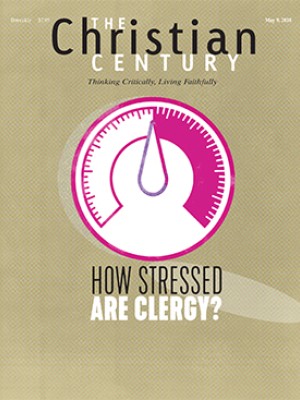When free speech in the classroom hurts
School can't simply admit students from diverse backgrounds and expect them to know how to talk to each other.
In my first year as academic dean at Andover Newton Theological School, a classroom episode spilled onto my desk. A white lesbian student had stated in class that she does not support same-sex marriage because marriage is an institution rooted in heteronormativity. An African American male student had responded that he agreed with her position for a different reason: according to his religious tradition, same-sex marriage is wrong. The first student was offended. Both students come from groups that have reason to feel vulnerable in an academic setting.
The professor handled the dispute thoughtfully. She said that Andover Newton is an open and affirming school, but we also celebrate that our students have different theological worldviews. Case closed? Not quite.
A painful debate followed. Do students who disagree with the school’s LGBTQ-affirming position have the right to say so on campus? To have to sit through delegitimizing words in class felt abusive to LGBTQ students. But to take disciplinary action against students making negative comments about LGBTQ identities could foment more anxiety than learning. During this debate, I would have found resources like Erwin Chemerinsky and Howard Gillman’s Free Speech on Campus and John Palfrey’s Safe Spaces, Brave Spaces helpful in framing my own point of view and in organizing conversations.
Read our latest issue or browse back issues.
Palfrey, who has written extensively on the legal implications of the digital age, taught at Harvard Law School before becoming head of Phillips Academy, an independent secondary school. He argues that educational leaders should build freedom-of-expression policies upon their school’s mission and context. Diversity, if a school’s mission claims and honors it, must find a way to live with free speech. But the tolerant should not have to expend all their energy tolerating those who are intolerant. Palfrey argues that schools may limit free speech, as long as limitations are couched in the school’s mission and disclosed to students in advance.
Palfrey provides some useful definitions. He describes, for example, the difference between “safe spaces,” where students can self-select into homogeneous groups, and “brave spaces,” where disagreements and differences are expected and necessary. He argues that today’s students need both safe spaces where they can practice honest communication and brave spaces where they can bring the ideas formulated in safe spaces and trade them with others.
Chemerinsky and Gillman come from backgrounds similar to Palfrey’s. Both were trained in law and now serve in higher education as administrators—Chemerinsky as dean at Berkeley Law and Gillman as chancellor at UC Irvine. Their book provides multiple perspectives on free expression: how it hurts and helps student learning, how it must be understood by aspiring lawyers, and how it influences educational leaders’ daily choices.
Both books celebrate the free exchange of ideas as fundamental to education while also furnishing caveats, especially as related to targeted harassment. They define terms like “microaggressions,” “hate speech,” and “trigger warnings” in ways that are helpful as leaders adapt to a new campus vocabulary. They note how technology has changed the landscape of free-speech debates. They name the tough choices that must be made about images, names, and icons. They outline dilemmas over inviting speakers to campus.
Palfrey integrates information about what schools legally can and cannot do throughout his book, and Chemerinsky and Gillman provide what amounts to a legal checklist. Both approaches help identify the difference between what is legal and what is simply the right thing to do. Both books offer helpful advice on creating policy before crises strike and interpreting those policies when unforeseen challenges emerge.
But neither book attends adequately to the relationship between freedom of expression and power. Chemerinsky and Gillman argue rightly that the most vociferous opponents of free speech on campus are the students themselves. They claim that students don’t understand what they have to lose if free speech does not remain a cherished value in higher education. But they seem frustrated with students rather than curious about why student behavior is changing. They argue that students do not value free speech because they do not remember, as the authors do, what it was like to have free speech threatened. This explanation for student protectiveness of the vulnerable rings hollow. Campuses have never been more diverse than they are now, so comparing students of today and yesterday is not ultimately helpful. Perhaps students are reacting, at times misguidedly, to the free flow of hateful words on campus because their professors and administrators are not responding adequately.
Palfrey does more than Chemerinsky and Gillman to point out how free speech protections sometimes hurt the vulnerable. He explores moral issues surrounding cases where one person’s freedom is another’s harm. He notes—but breezes over—the fact that those on campus who come from underrepresented groups are also the most common targets of aggressive speech or a toxic environment. Protecting the free speech of the hateful is one way those in power prevent less powerful people from getting too comfortable. This point is worthy of greater attention in both books.
I became more keenly aware through these books that schools committed to diversity must think seriously about free speech. Many schools that claim a commitment to diversity limit their attention to the admissions process. Schools cannot simply admit students from a wide array of backgrounds—including those to whom their doors were once closed—and then expect the students to figure out how to become a community. In a diverse society, leaders must examine their institutions’ conscious and unconscious biases about freedom of expression. Palfrey, Chemerinsky, and Gillman assist in this crucial task.







